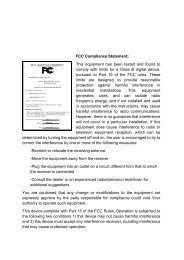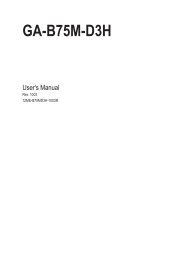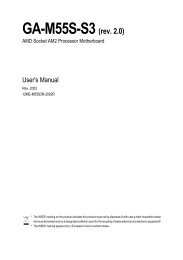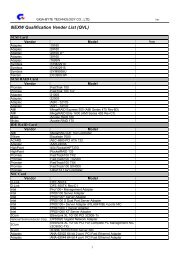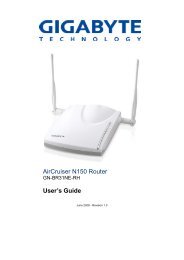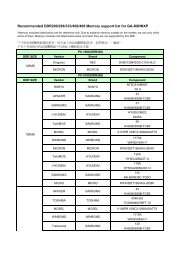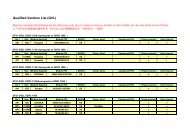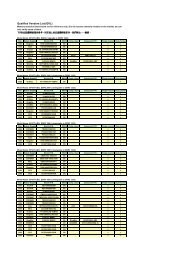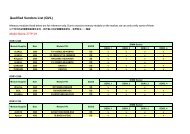GA-K8VM800M / GA-K8VM800M-RH - visit site - Gigabyte
GA-K8VM800M / GA-K8VM800M-RH - visit site - Gigabyte
GA-K8VM800M / GA-K8VM800M-RH - visit site - Gigabyte
You also want an ePaper? Increase the reach of your titles
YUMPU automatically turns print PDFs into web optimized ePapers that Google loves.
4-1-4 Serial ATA BIOS Setting Utility Introduction<br />
RAID Levels<br />
RAID (Redundant Array of Independent Disks) is a method of combining two hard disk drives into one logical<br />
unit. The advantage of an Array is to provide better performance or data fault tolerance. Fault tolerance is<br />
achieved through data redundant operation, where if one drives fails, a mirrored copy of the data can be<br />
found on another drive. This can prevent data loss if the operating system fails or hangs. The individual disk<br />
drives in an array are called members. The configuration information of each member is recorded in the<br />
reserved sector that identifies the drive as a member. All disk members in a formed disk array are recognized<br />
as a single physical drive to the operating system.<br />
Hard disk drives can be combined together through a few different methods. The different methods are<br />
referred to as different RAID levels. Different RAID levels represent different performance levels, security<br />
levels and implementation costs. The RAID levels which the VIA VT8237R / VT8237R+ chipset<br />
supports are RAID 0, RAID 1,and JBOD.<br />
RAID 0 (Striping)<br />
RAID 0 reads and writes sectors of data interleaved between multiple drives. If any disk member fails, it<br />
affects the entire array. The disk array data capacity is equal to the number of drive members times the<br />
capacity of the smallest member. The striping block size can be set from 4KB to 64KB. RAID 0 does not<br />
support fault tolerance.<br />
RAID 1 (Mirroring)<br />
RAID 1 writes duplicate data onto a pair of drives and reads both sets of data in parallel. If one of the<br />
mirrored drives suffers a mechanical failure or does not respond, the remaining drive will continue to function.<br />
Due to redundancy, the drive capacity of the array is the capacity of the smallest drive. Under a RAID 1<br />
setup, an extra drive called the spare drive can be attached. Such a drive will be activated to replace a failed<br />
drive that is part of a mirrored array. Due to the fault tolerance, if any RAID 1 drive fails, data access will not<br />
be affected as long as there are other working drives in the array.<br />
JBOD (Spanning)<br />
A spanning disk array is equal to the sum of the all drives when the drives used are having different capacities.<br />
Spanning stores data onto a drive until it is full, then proceeds to store files onto the next drive in the array.<br />
When any disk member fails, the failure affects the entire array. JBOD is not really a RAID and does not<br />
support fault tolerance.<br />
- 63 -<br />
Appendix<br />
English




